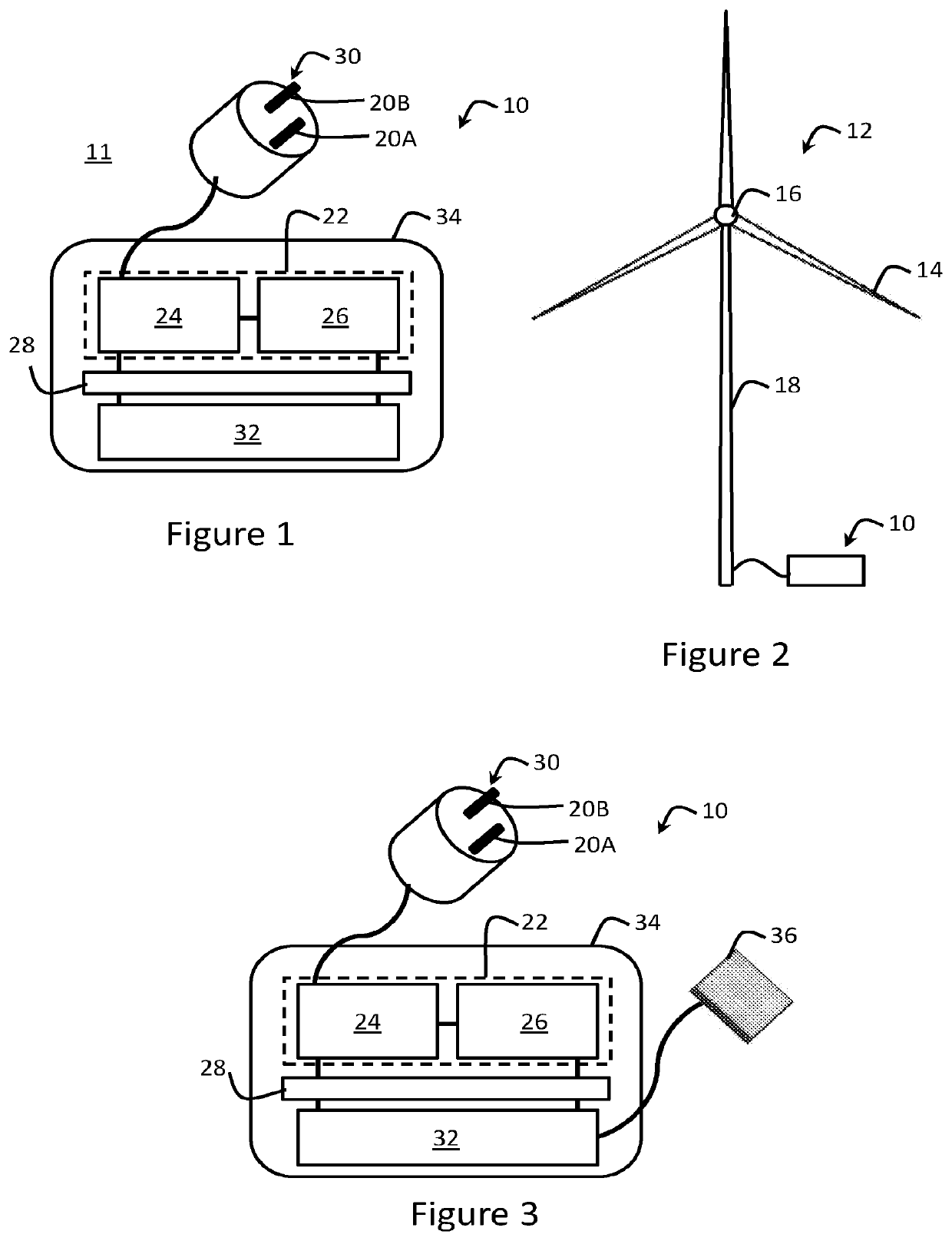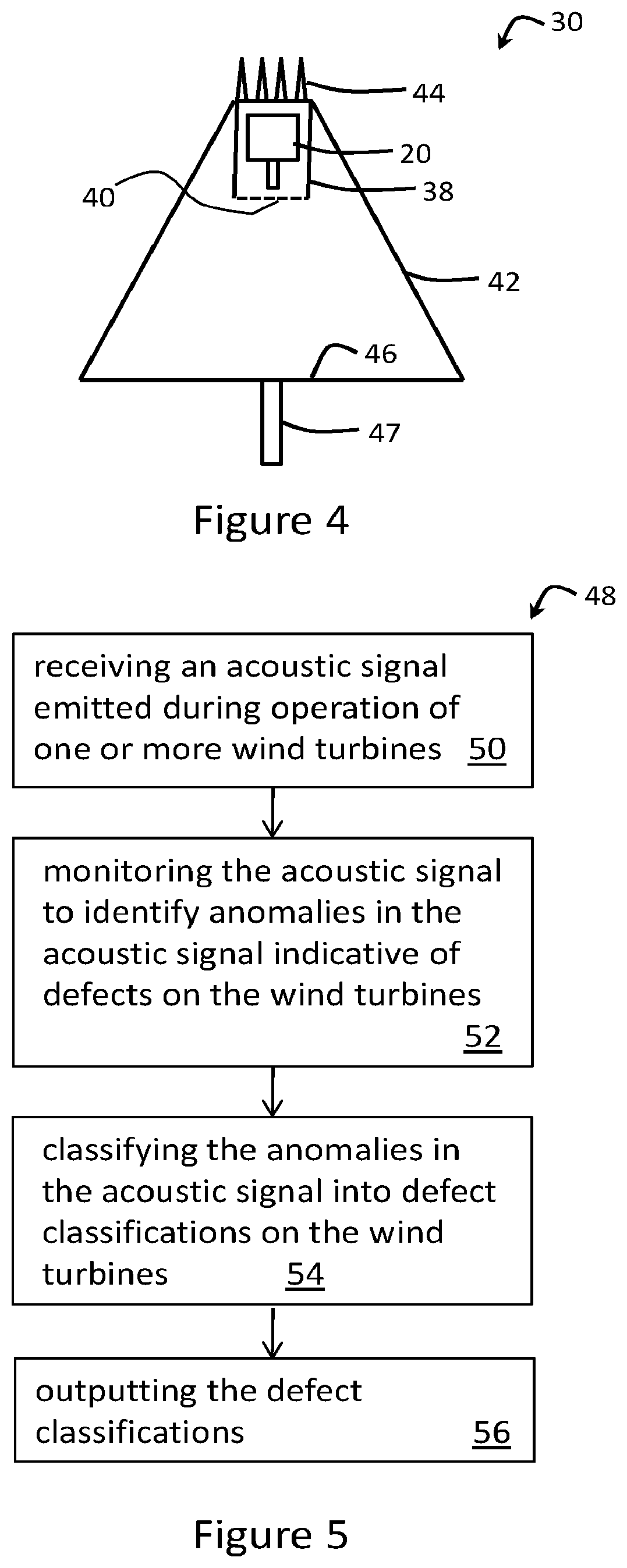Apparatus and Method of Detecting Anomalies in an Acoustic Signal
a technology of acoustic signal and anomaly detection, applied in the field of anomaly detection and anomaly detection in an acoustic signal, can solve the problems of blade blade manufacturing and operation defects, wind turbines generally increasing in size, and trailing edge splits
- Summary
- Abstract
- Description
- Claims
- Application Information
AI Technical Summary
Benefits of technology
Problems solved by technology
Method used
Image
Examples
Embodiment Construction
[0038]An apparatus 10 for detecting anomalies in an acoustic signal according to an embodiment is shown in FIG. 1. The apparatus 10 includes two microphones 20A 20B for receiving an acoustic signal of an environment 11 and is located in the environment 11. The apparatus further includes a processor 22 implementing a number of modules to analyse the acoustic signal. The modules include an acoustic signal processing module 24 configured to analyse the acoustic signal to identify anomalies in the acoustic signal indicative of events occurring in the environment 11 and to classify the anomalies in the acoustic signal into one or more event classifications, and a communications module 26 configured to output the one or more event classifications. The apparatus 10 includes an environmental enclosure 34 arranged to house the processor 22 and to protect the processor 22 from environmental contaminants.
[0039]The apparatus 10 further includes a microphone housing 30 arranged to at least parti...
PUM
| Property | Measurement | Unit |
|---|---|---|
| frequency | aaaaa | aaaaa |
| frequency | aaaaa | aaaaa |
| speed | aaaaa | aaaaa |
Abstract
Description
Claims
Application Information
 Login to View More
Login to View More - R&D
- Intellectual Property
- Life Sciences
- Materials
- Tech Scout
- Unparalleled Data Quality
- Higher Quality Content
- 60% Fewer Hallucinations
Browse by: Latest US Patents, China's latest patents, Technical Efficacy Thesaurus, Application Domain, Technology Topic, Popular Technical Reports.
© 2025 PatSnap. All rights reserved.Legal|Privacy policy|Modern Slavery Act Transparency Statement|Sitemap|About US| Contact US: help@patsnap.com


